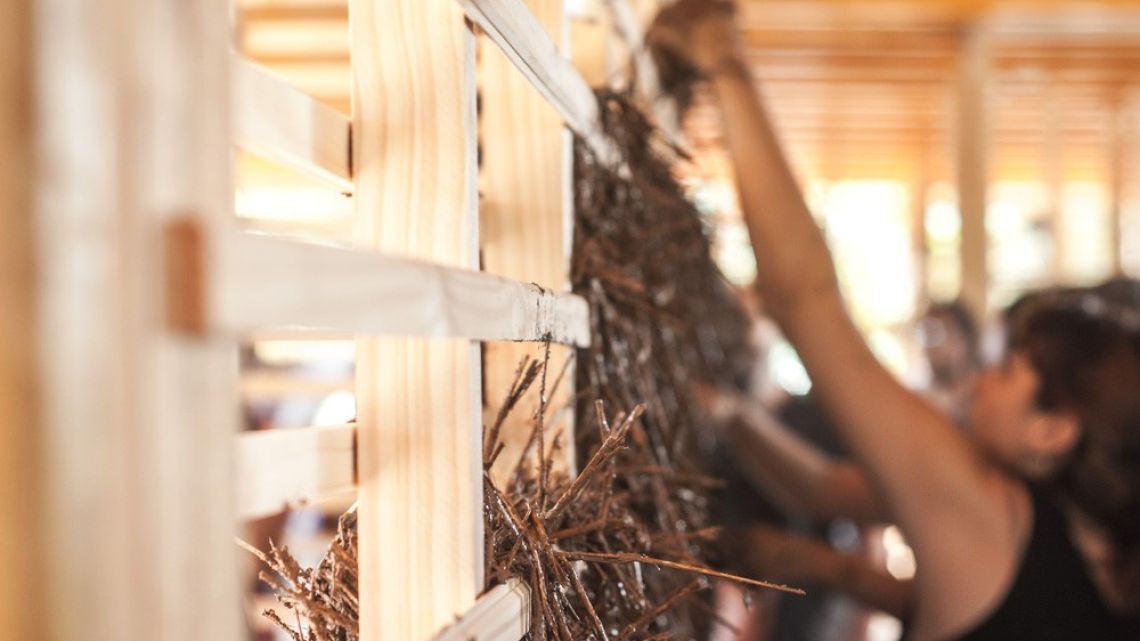The construction of dirt houses seeks to recover the use of natural materials to create sustainable habitats such as response to climate change. These houses are not only a constructive system, but also an opportunity to integrate rainwater harvesting, solar energy and community life. In addition, it seeks to preserve the architectural heritage and regenerate knowledge in dialogue with the bioconstructors.
The main focus of the work is centered on rediscovering and valuing earth, clay, fiber and lime constructions, the use of which has spread in the architecture of various countries around the world. These constructions offer benefits such as the ability to regulate the temperature and the noiseremarkable structural resistance and durability, low maintenance, fire protection and a pleasant connection with the natural environment.
It is important to note that the construction of houses with earthen materials has experienced a significant increase in recent years, thanks to the participation of small local groups instead of large construction companies.
dirt houses
The construction process of the earthen houses begins with the placement of a classic foundation, which consists of a mix of cyclopean concrete and a concrete beam designed to guarantee a durability of more than 100 years and comply with appropriate safety standards. In case of building in height, national woods are used, although woods from the region can also be used if necessary.
Thanks to classical architecture, Buenos Aires continues to be the “Queen of Silver”
For the walls, a framework of wood, reeds and straw clay, creating a natural architecture that allows good ventilation. The construction work is carried out in collaboration between the owner of the house and the team of builders, fostering an environment of care and mutual respect.
Special attention is paid to the materials used in construction and techniques such as lime slaking are applied to create lime and clay coatings. While clay lining is a viable option, precautions need to be taken to prevent water from wearing it away, so lime linings are also considered. To achieve fine finishes on the walls, adequate drying time is allowed before applying coatings with mixtures of fine sand or marble.
In addition, clay and lime linings can be used to rehabilitate old houses and improve moisture management inside buildings.
Your own home should be “the happiness machine”
On the other hand, to manufacture adobes, two options are used: in a brickyard or in the work itself. An adobe “W” in the shape of a “U” is built on the mezzanine with a minimum beam calculated by an experienced engineer to increase the durability of the house. A hipped roof is built and a stove is installed in the center of the dwelling for convenience. These houses are cheap and can be built with walls 40 centimeters thick.
Earth houses and bio-architecture
In recent times, there has been a notable increase in research carried out by university institutions in this area, as well as the formulation of specialized training proposals, such as the University Diploma in Bioarchitecture UTN.
It is very important that graduates of careers such as Architecture, Engineering, Industrial Design, Interior Design, Permaculture Designers, as well as those people without a university degree who work as Builders, Master Construction Masters, and the like, internalize and train in construction of earthen houses.
This trend towards earthen architecture is a response to climate change: it decreases the carbon footprint.
It is necessary to be trained in the matter, to be able to apply new techniques in bioconstruction, in rural, urban and peri-urban environments.
* Bachelor of Architecture, teacher of the University Diploma in Bioarchitecture UTN
